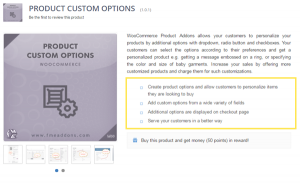Your company creates a lot of content. Some are owned, some earned, some paid, and some a combination. In today’s online environment, there is often a high degree of editability, even for content not necessarily owned by the brand. But resources are always tight, so what content should get the most attention?
Branded Content
Branded content is literally about your brand or “from” it. It is content that clearly represents your brand. Branded content is any content authored by you and placed on a web property (site, social media, YouTube, etc.) that your brand controls. It is also content clearly authored or controlled by your brand that is placed on a third-party website.
Pay Maximum Attention to Branded Content
Branded content needs to be gone over with a fine-toothed comb. It must be carefully fact-checked, and edited for tone and content. The majority of editorial time should be spent making sure this content is right because when consumed it will represent you.
Bottom line: Branded content is specifically about your brand or it exists on a branded property you control.
Non-Branded Content
Non-branded content is content that may mention your brand but is not specifically written about it. It may contain links that reference your web properties but does not appear to be authored by you. When you find third-party blogs linking to content within your site this is most often non-branded content. It may or may not mention your brand. In some cases, your brand name isn’t mentioned at all, but a link may exist from the page to a web page you control.
Leave Non-Branded Content Alone (for the most part)
Non-branded content is not normally something you would spend time editing. In most cases, you don’t get a choice because a third-party is the creator. In some cases, you may have knowledge of content being created about your brand or the mentions it, and may have a say in how the content is prepared. Unless something is very poorly communicated we advise clients to take a mostly hands-off approach. For most brands, the vast majority of content created is non-branded, and attempts to control it are not only resource intensive, but stifles the diversity of content and could lead to problems.
Bottom line: Non-branded content is not specifically about your brand or authored by it.
Artificial Intelligence Can Tell Who the Author Is
What kind of problems? Today about 20% of search results are the result of artificial intelligence (AI) or machine learning (ML). Both AI and ML look for patterns, AI looks for both patterns and meaning. In many ways, AI can tell who authored content. It compares writing styles from billions of web pages and sees patterns. From those patterns, it can make a guess as to who authored it. If the same author shows up for too many published pieces.
This is a common issue with link building firms. They use the same author to write all content. At Reputation X we don’t, we use a diverse group of writers and content creators to avoid this fate.
Summary
It is tempting to try to control as much content about our brand as possible. With content collaborations happening all the time we often have the option to extend control to third-parties, but that can be a mistake. Our advice is to spend maximum effort on content that is clearly about or by your brand and let third-party content compliment it in whatever fashion it will. It’s more organic that way, and shouldn’t raise red flags with search engines.
Business & Finance Articles on Business 2 Community(72)





